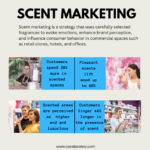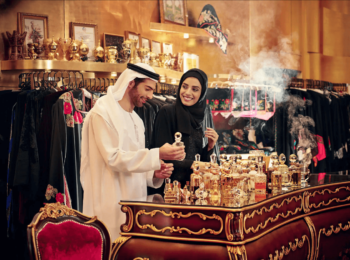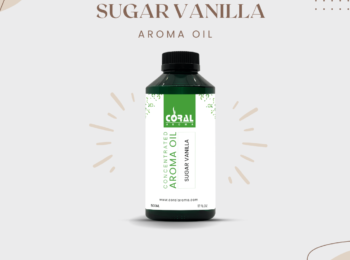Welcome to the fascinating world of scent marketing strategies. In this blog, we will delve deep into the aromatic arsenal that brands use to captivate our senses and enhance our experiences. From delicate floral essences that transport us to a blooming garden to the comforting scent of freshly baked cookies that evoke warm memories, scent marketing has become an increasingly popular tool for brands to connect with customers on an emotional level.
The Power of Scents in Marketing
Scent has a significant impact on our purchasing decisions and perception of a brand. A suitable scent can create a strong connection, trigger positive emotions, and even influence buying behavior. That is why companies from various industries are now adopting scent marketing as a core element of their branding strategy.
Scent, unlike other senses, can bypass rational thinking and directly evoke emotions and memories. It taps into our limbic system, the part of the brain responsible for emotions and memories, making it a powerful tool for marketers. Studies have shown that customers are more likely to remember a brand and have a positive perception of it when a pleasant scent is present. This is because scent can create a strong emotional connection, which in turn leads to increased customer loyalty and brand recognition.
Types of Scent Marketing Strategies
There are several types of scent marketing strategies that brands can employ to create a sensory experience for their customers. Two popular approaches are ambient scenting and signature scent branding. Let’s take a closer look at each of these strategies.
Ambient Scenting
Ambient scenting involves the use of pleasant fragrances in a physical space, such as retail stores, hotels, or even office environments. The goal is to create a welcoming and pleasant atmosphere that enhances the overall customer experience.
One of the main advantages of ambient scenting is its ability to influence customer behavior. Studies have shown that certain scents can increase the amount of time customers spend in a store and even encourage them to make a purchase. For example, the scent of lavender has been found to have a calming effect, which can help reduce stress and anxiety in a retail environment. This, in turn, leads to a more enjoyable shopping experience and may result in increased sales.
However, it’s important to note that ambient scenting should be used strategically and in moderation. An overpowering or inappropriate scent can have the opposite effect and drive customers away. Additionally, it’s essential to consider the preferences and sensitivities of different customer groups when selecting a scent.
Signature Scent Branding
Signature scent branding takes a more focused approach by creating a unique and recognizable scent for a brand. This scent is then used consistently across various touchpoints, such as retail stores, hotels, and even product packaging. The goal is to create a sensory signature that customers associate with the brand, enhancing brand recognition and loyalty.
One of the key benefits of signature scent branding is its ability to create a memorable and distinctive brand image. When customers encounter the signature scent, it triggers an immediate association with the brand, reinforcing its identity and values. This can be particularly effective in crowded markets where brands are constantly vying for attention.
However, creating a signature scent requires careful consideration and collaboration with fragrance experts. The scent should align with the brand’s personality and target audience, evoking the desired emotions and associations. Additionally, it’s important to ensure consistency in scent application across different touchpoints to create a cohesive brand experience.
Comparing and Contrasting Scent Marketing Strategies
Now that we have explored the two main scent marketing strategies, let’s compare and contrast them based on various factors.
Target Audience
Ambient scenting is more suited for businesses that cater to a wide range of customers, such as retail stores or hotels. The goal is to create a pleasant and welcoming environment that appeals to a broad audience. On the other hand, signature scent branding is more effective for businesses that have a distinct target audience and want to create a unique brand identity. It allows for a more targeted and personalized approach to scent marketing.
Brand Image
Ambient scenting can help reinforce a brand’s image by creating a specific atmosphere. For example, a luxury hotel may use a scent that is associated with opulence and relaxation to enhance the perception of their brand. Signature scent branding, on the other hand, creates a more direct association between the scent and the brand. It becomes a part of the brand’s identity and helps differentiate it from competitors.
Cost and Implementation
Ambient scenting can be relatively easier to implement as it involves the use of scent diffusers or sprays in a physical space. However, the cost can vary depending on the size of the space and the desired scent intensity. Signature scent branding, on the other hand, requires more investment in terms of fragrance development and consistency across different touchpoints. It also requires ongoing maintenance to ensure the scent remains consistent over time.
Conclusion
Scent marketing is a powerful tool that brands can use to create emotional connections with their customers. Whether through ambient scenting or signature scent branding, the right scent can enhance the overall brand experience and influence customer behavior. By understanding the different strategies and their pros and cons, brands can make informed decisions about their scent marketing approach.
So next time you walk into a store and are greeted by a pleasant aroma or encounter a signature scent that instantly transports you to a specific brand, take a moment to appreciate the power of scent marketing. It’s a subtle yet effective way for brands to leave a lasting impression and connect with their customers on a deeper level.























